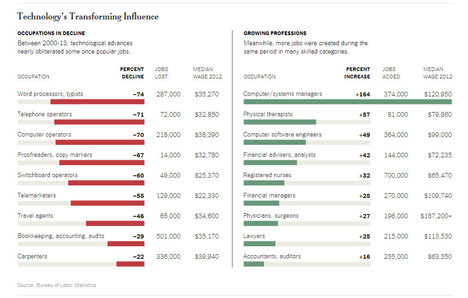(p. B4) A study published this year in the journal Experimental Brain Research found that measurements of people’s heart rates, hormonal levels and other factors while watching a boring movie — men hanging laundry — showed greater signs of stress than those watching a sad movie.
“We tend to think of boredom as someone lazy, as a couch potato,” said James Danckert, a professor of neuroscience at the University of Waterloo in Ontario, Canada, and a co-author of the paper. “It’s actually when someone is motivated to engage with their environment and all attempts to do so fail. It’s aggressively dissatisfying.”
It’s not just the amount of work, Professor Spector said, also but the type. . . .
“You can be very busy and a have a lot to do and still be bored,” he said. The job — whether a white-collar managerial position or blue-collar assembly line role — also needs to be stimulating.
. . .
In a 2011 paper based on the doctoral dissertation of his student Kari Bruursema, Professor Spector and his co-authors found that the stress of boredom can lead to counterproductive work behavior, like calling in sick, taking long breaks, spending time on the Internet for nonwork-related reasons, gossiping about colleagues, playing practical jokes or even stealing. While most workers engage in some of these activities at times, the bored employee does it far more frequently, he said.
For the full story, see:
ALINA TUGEND. “Shortcuts; The Contrarians on Stress: It Can Be Good for You.” The New York Times (Sat., OCT. 4, 2014): B4.
(Note: ellipsis added.)
(Note: the online version of the story has the date OCT. 3, 2014.)
The Experimental Brain Research study mentioned above, is:
Merrifield, Colleen, and James Danckert. “Characterizing the Psychophysiological Signature of Boredom.” Experimental Brain Research 232, no. 2 (Feb. 2014): 481-91.
The article mentioned above, that is co-authored by Spector, is:
Bruursema, Kari, Stacey R. Kessler, and Paul E. Spector. “Bored Employees Misbehaving: The Relationship between Boredom and Counterproductive Work Behaviour.” Work & Stress 25, no. 2 (April 2011): 93-107.
 “Emmanuel Macron, France’s new economy minister, has been a major force behind a recent shift by President François Hollande toward a more centrist economic policy.” Source of caption and photo: online version of the NYT article quoted and cited below.
“Emmanuel Macron, France’s new economy minister, has been a major force behind a recent shift by President François Hollande toward a more centrist economic policy.” Source of caption and photo: online version of the NYT article quoted and cited below.

